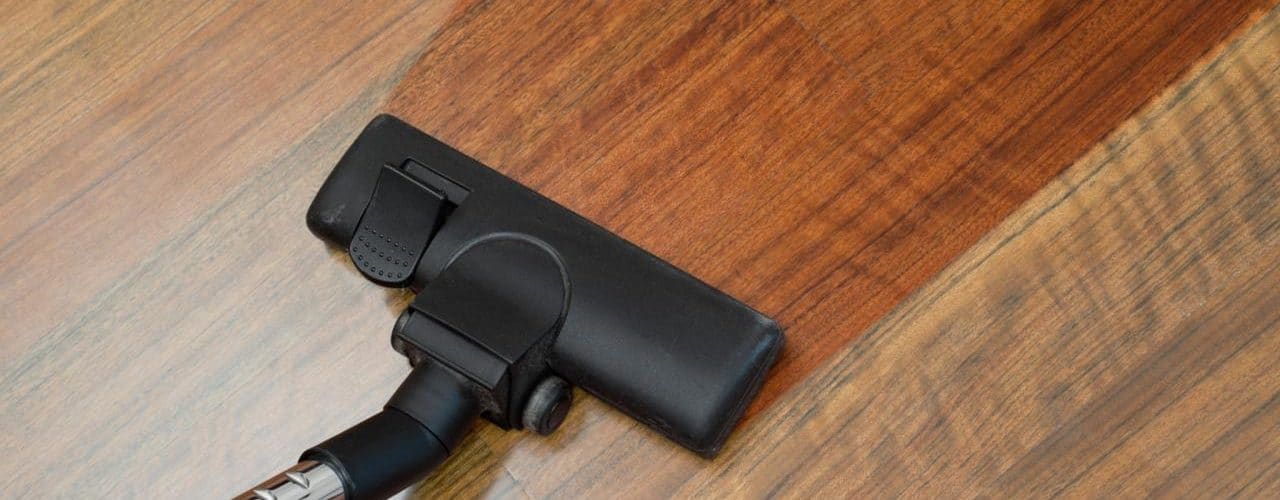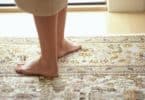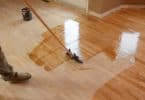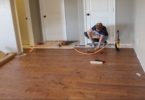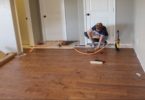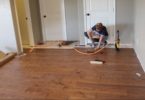Wood floors are versatile, long-lasting and easy to care for, as long as you know what you’re doing. There are different types of wood floors, each with specific cleaning methods. If you install a new wood floor, you will have instructions from the floor’s manufacturer to guide you. But what if you move into a new home with existing wood floors and don’t have any instructions?
There are two basic types of hardwood floors: surface-sealed and penetrating-seal or oil-treated floors. Most new wood floors are surface sealed, while older wood floors are usually penetrating-sealed.
One way to tell which type you have is to swipe your finger across a section of floor. If your finger doesn’t leave a smudge, the finish is surface sealed. If your finger does smudge the floor, the floor has been treated with an oil finish, penetrating seal, lacquer, shellac or varnish and then waxed.
Surface-sealed floors are coated with polyurethane, urethane, or polycyclic. These are the easiest to care for: simply sweep and damp mop. NEVER wax a surface-sealed floor.
Older penetrating-sealed wood floors may not be quite as easy to care for. This is due to the fact that they are not as moisture-resistant and may be more easily damaged by spills or wear and tear. They may require periodic waxing to retain their luster. If they become dull from waxing, they may need to be buffed out on a regular basis to maintain its luster.
Your two best tools for cleaning a hardwood floor are a broom and a mop. Frequent sweeping with a broom will eliminate dirt particles that can scratch the floor. And damp (not wet) mopping will pick up what the broom misses.
For spots and stains, use a cleaner made for hardwood floors, not a furniture spray. You may also try mild dish washing soap of about ¼ of a cup to a bucket of water.
Don’t use excessive amounts of water to mop—it can soak into the spaces and cause wood to swell. And never use ammonia, abrasive cleaners, or alkaline products that will dull the finish.
One of the best ways to make cleaning hardwood floors easier is to take a few basic steps to minimize the need for cleaning.
Use area rugs at each entry point, and periodically shake out the dust. Use thick mats in areas where water may splash.
Because it is a natural product, wood will change over time. You may need to protect it from excessive exposure to sunlight, especially if the sunlight only reaches certain areas. Window treatments and rotation of furniture and rugs will help the floor to age evenly.
A dehumidifier may also help to reduce moisture that can damage your wood floor, especially during winter months.
High heel shoes and pet claws can also damage a hardwood floor by scratching it. Use protectors on furniture and table legs, and be careful when moving heavy furniture so as not to damage the floor.
If wear on your floor is excessive, it may need to be screened and then re-coated. Screening will remove the current polyurethane finish and allow the application of fresh polyurethane.
If stains have penetrated the wood itself, the floor may need to be sanded, then stained again and refinished.
If your floor needs screening or refinishing, you will probably need to consult a reputable professional floor contractor. Always ask for references and check your local Better Business Bureau for any unresolved complaints. Make sure any warranties are in writing.
While no flooring choice is without some need for maintenance, a properly cared-for wood floor will give years of durable, easy-care beauty to your home.
<>

